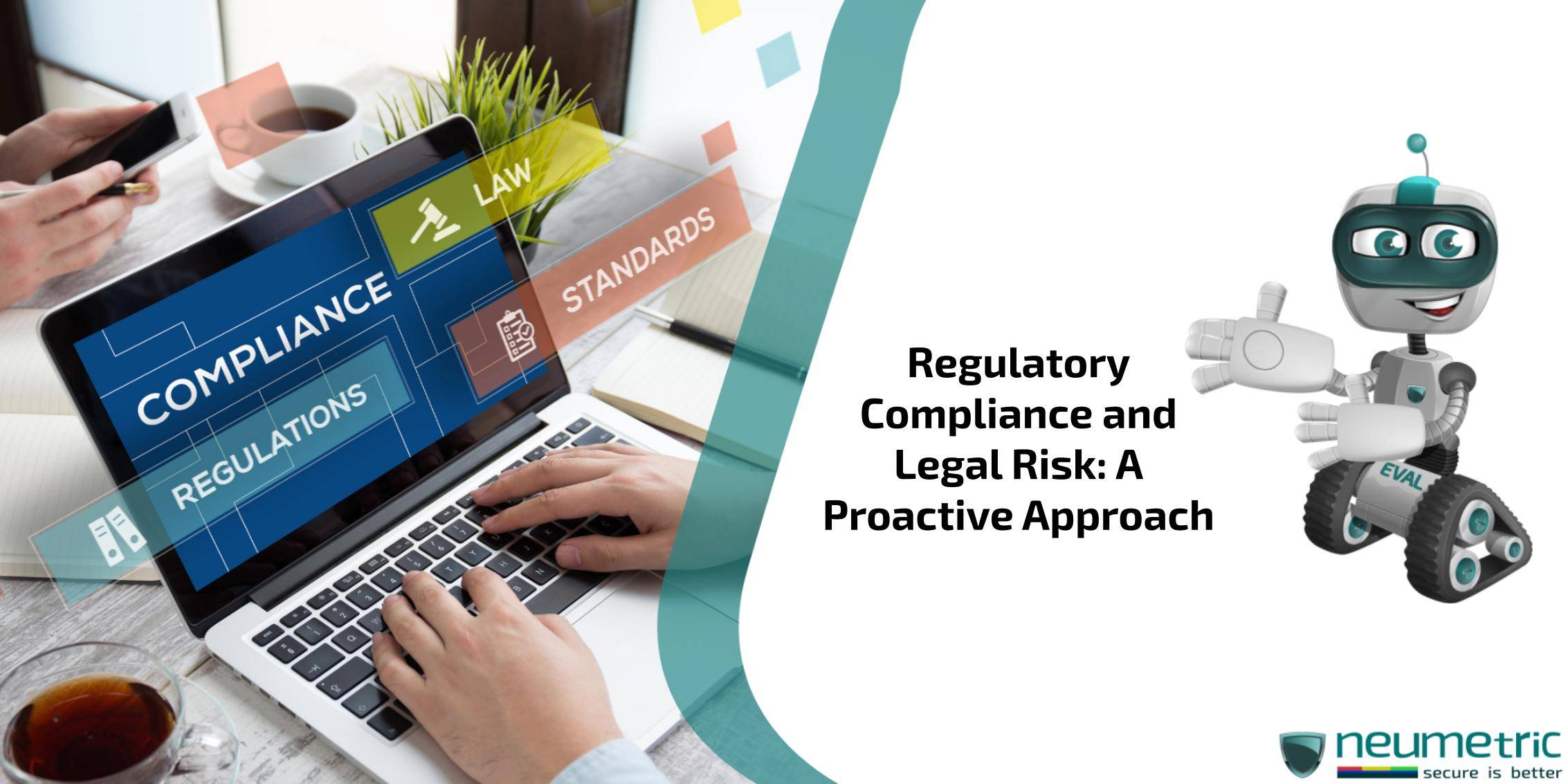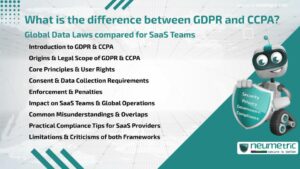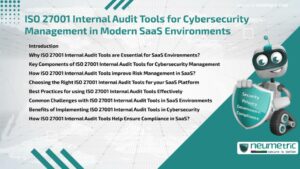Table of Contents
ToggleRegulatory Compliance & Legal Risk: A Proactive Approach
Introduction
In the contemporary business landscape, the regulatory framework is undergoing a profound transformation, marked by a relentless influx of new laws & standards. This surge in regulatory requirements presents a formidable challenge for enterprises seeking to operate ethically & within the boundaries of the law. The dynamic nature of these regulations requires companies to adopt a proactive stance to compliance, moving beyond traditional reactive measures.
The global business ecosystem is experiencing a paradigm shift, with governments & regulatory bodies intensifying their scrutiny of corporate conduct. This heightened vigilance is evident in areas such as data protection, environmental sustainability & ethical business practices. As a result, a comprehensive understanding of & adherence to these evolving regulations are becoming paramount for businesses aiming to thrive in this complex regulatory landscape.
Against this backdrop, the significance of proactive compliance programs comes to the forefront. Companies are recognising the limitations of reactive approaches & are increasingly investing in strategies that anticipate & address compliance issues before they escalate. Beyond mere adherence, a proactive compliance culture instils a sense of responsibility & transparency within the organisation, fostering not only legal resilience but also enhancing overall operational efficiency & stakeholder trust. In this climate, embracing a proactive approach to regulatory compliance is not merely a strategic choice but an indispensable component of sustainable business practices.
The Rising Compliance Burden
As businesses weave their way through the intricate tapestry of modern commerce, the burden of regulatory compliance has grown into a substantial challenge over the past few decades. The regulatory landscape has evolved at an unprecedented pace, demanding companies to be more nimble & proactive in their approach to ensure they stay on the right side of the law. It’s not just about paperwork & ticked boxes; it’s about staying ahead of the curve in an era where regulations are constantly reshaping the business terrain.
The sheer growth in the number & complexity of regulations is nothing short of staggering. From environmental policies to data protection laws, businesses are navigating an ever-expanding maze of compliance requirements. Prominent among these are heavyweight regulations like the General Data Protection Regulation [GDPR] & the California Consumer Privacy Act [CCPA], each carrying significant implications for how companies handle & protect sensitive information. On top of these, industry-specific rules add an extra layer of intricacy, making it essential for businesses to tailor their compliance strategies to the unique demands of their sectors.
The stakes for non-compliance have escalated in tandem with the rise in regulations. Fines & penalties have become more stringent, creating a financial & reputational minefield for companies. Violating regulations such as GDPR or CCPA not only incurs hefty monetary fines but also puts a company’s reputation on the line. The fallout from non-compliance extends beyond the courtroom, impacting customer trust & brand integrity. It’s no longer just a matter of following the rules; it’s a strategic imperative for businesses to foster a culture of compliance, understanding that the cost of non-compliance goes far beyond the immediate financial implications.
In this landscape of heightened regulatory scrutiny, a proactive approach to compliance isn’t just about avoiding trouble – it’s about future-proofing. It’s a commitment to understanding the nuances of regulations, anticipating changes & integrating compliance seamlessly into the fabric of corporate culture. Rather than viewing it as a burdensome task, a proactive approach positions compliance as a strategic advantage, signalling a company’s commitment to ethical conduct, responsible governance & long-term success.
Proactive vs Reactive Approach
In the high-stakes arena of regulatory compliance & legal risk, the contrast between a reactive & proactive approach is akin to night & day. Companies, more often than not, find that a reactive stance falls short when it comes to navigating the complexities of the regulatory landscape. It’s like trying to catch up with a speeding train – you might eventually get there, but the collateral damage along the way can be extensive. On the flip side, a proactive approach isn’t just a safety net; it’s a strategic mindset that fundamentally reshapes how businesses engage with compliance.
- Reactive compliance fails more often: Reactive compliance, though a common fallback, tends to be more of a firefighting strategy. It involves addressing issues as they arise, often in response to audits, investigations or worse, legal actions. The limitations of this approach become apparent when fines are imposed & reputational damage is done – damage that can sometimes be irreparable. It’s essentially a game of catch-up & in the dynamic world of regulations, playing catch-up is a losing game.
- Proactive compliance embedding in processes: In contrast, a proactive compliance strategy is all about anticipation & prevention. It’s not a separate entity but rather a mindset embedded in the very processes that drive the company. This involves weaving compliance considerations into the fabric of daily operations, from product development to customer interactions. It’s a shift from viewing compliance as a hurdle to be cleared to understanding it as an integral part of responsible & sustainable business practices.
- Continual process monitoring: Continual process monitoring is a cornerstone of proactive compliance. Rather than periodic checks, this approach involves real-time surveillance of processes, allowing for immediate identification & rectification of potential compliance gaps. It’s about staying one step ahead of regulatory changes & evolving business landscapes, ensuring that the company’s practices remain in alignment with the latest standards.
- Regular employee training: Regular employee training is another crucial element. Employees are the frontline ambassadors of compliance within a company. Regular, comprehensive training programs not only educate staff on existing regulations but also keep them abreast of any changes. This not only minimises the risk of inadvertent non-compliance but also fosters a culture where everyone is collectively responsible for upholding the highest standards.
- Staying current on regulatory changes: Staying current on regulatory changes is the final piece of the puzzle. Proactive compliance involves actively monitoring & adapting to shifts in the regulatory environment. This requires a dedicated effort to keep abreast of industry trends, policy alterations & emerging risks. By staying ahead of the curve, companies can make informed adjustments to their compliance strategies, preventing potential pitfalls before they even materialise.
Elements of a Proactive Program
Crafting a proactive regulatory compliance program is akin to building a robust fortress against legal risks. It requires a strategic blend of foresight, clear guidelines & continuous vigilance. Here’s a closer look at the key elements that constitute an effective proactive program:
Risk Assessments:
Identify Areas of Exposure: The first step is pinpointing potential areas of vulnerability. This involves a comprehensive examination of business processes, from data handling to product development, to identify where regulatory risks may lurk.
Prioritise Risks: Not all risks are created equal. Prioritising them based on their potential impact & likelihood of occurrence allows companies to allocate resources judiciously, focusing on the most critical areas.
Document Program: A transparent & well-documented compliance program is essential. This documentation serves as a roadmap, outlining the identified risks, strategies for mitigation & the overall structure of the proactive compliance initiative.
Policies & Procedures:
Clear Policies Reflecting Regulations: The foundation of a proactive compliance program rests on clearly defined policies that align with relevant regulations. These policies should be easily understood by employees & serve as a guiding light in their daily operations.
Detailed Procedures for Adherence: Beyond policies, detailed procedures break down the steps necessary for adherence. This includes specific actions employees should take to ensure compliance in various scenarios, leaving no room for ambiguity.
Training & Awareness:
Role-Based Training Sessions: One-size-fits-all training doesn’t cut it. Tailoring training sessions based on employees’ roles ensures that individuals receive the specific knowledge needed to navigate their responsibilities in compliance with regulations.
Testing Employee Knowledge: Regular assessments gauge the effectiveness of training efforts. Testing not only ensures that employees understand the compliance requirements but also identifies areas that may need additional focus.
Refresher Courses: The regulatory landscape is dynamic. Periodic refresher courses keep employees abreast of any changes in regulations & reinforce the importance of compliance within the organisational culture.
Monitoring & Auditing:
Technology Tools: Leveraging technology is crucial for real-time monitoring. Automated tools can flag potential compliance breaches, allowing for swift corrective action before issues escalate.
Internal Audits: Regular internal audits provide an independent evaluation of the effectiveness of the compliance program. This internal scrutiny helps identify gaps & areas for improvement, ensuring ongoing compliance.
External Audits: External audits, whether conducted by third-party experts or regulatory bodies, bring an objective perspective. They offer an additional layer of assurance & demonstrate a commitment to transparency & accountability.
Addressing Gaps & Deficiencies
Navigating the ever-shifting landscape of regulatory compliance demands not just foresight but an unwavering commitment to addressing gaps & deficiencies proactively. Here’s a closer look at the key strategies for plugging those compliance holes:
- Corrective Action Plans: Swift & targeted corrective action plans are the frontline response to identified gaps. These plans outline specific steps to rectify non-compliance issues, ensuring that the organisation can course-correct promptly.
- Process Adjustments: Identifying deficiencies often calls for a reevaluation of existing processes. Adjustments may be needed to align procedures with the latest regulatory standards, providing a more robust framework for compliance.
- Additional Training: Gaps in compliance can sometimes be traced back to a lack of understanding. In such cases, additional training becomes a strategic tool. It’s not just about punishment but about equipping employees with the knowledge needed to meet compliance requirements effectively.
- Software Updates: In an era where technology is intertwined with compliance, ensuring that software systems are up-to-date is paramount. Regular updates & patches address vulnerabilities, reducing the risk of non-compliance due to outdated technology.
- External Consultants: Sometimes, an external perspective can be invaluable. Bringing in consultants with expertise such as Neumetric, in regulatory compliance offers a fresh set of eyes, uncovering blind spots & providing tailored solutions to bridge any existing gaps.
Sustaining Compliance Over Time
Maintaining a proactive approach to regulatory compliance isn’t a one-time effort; it’s an ongoing commitment woven into the fabric of an organisation’s culture. Sustaining compliance over time requires a combination of dedicated resources, vigilant oversight & unwavering leadership commitment.
- Dedicate Compliance Staff: Having a dedicated team focused on compliance ensures that there are experts constantly monitoring the regulatory landscape. Their role involves staying abreast of changes, providing guidance & acting as a bridge between evolving regulations & day-to-day operations.
- Continual Program Oversight: Ongoing program oversight is the heartbeat of sustained compliance. Regularly reviewing & refining the compliance program ensures that it remains aligned with both existing & emerging regulations. It’s a dynamic process that adapts to the evolving needs of the business environment.
- Regular Assessments: Periodic assessments are key to identifying any deviations or gaps in the compliance program. These assessments, whether conducted internally or externally, serve as checkpoints to validate the effectiveness of existing measures & pinpoint areas that may need reinforcement.
- Leadership Commitment: Sustained compliance is a top-down commitment. When leaders prioritise & champion compliance efforts, it sends a clear message throughout the organisation. Leadership commitment fosters a culture where compliance is not viewed as a mere obligation but as a shared responsibility integral to the company’s success.
Conclusion
In the dynamic realm of regulatory compliance & legal risk, embracing a proactive approach isn’t just a safeguard; it’s a cornerstone for building organisational resilience. By anticipating & addressing compliance challenges before they escalate, companies create a robust foundation that can weather the storms of regulatory changes. This resilience isn’t just about avoiding fines or legal entanglements; it’s about fostering a culture that thrives amid uncertainty.
Moreover, a proactive approach doesn’t stifle innovation; rather, it provides a framework for innovation within constraints. By understanding & integrating compliance considerations into the fabric of operations, companies can navigate regulatory requirements without stifling creativity. It’s a delicate balance that allows for the exploration of new ideas & technologies while ensuring that these endeavours remain firmly within the bounds of legal & ethical standards. In essence, a proactive approach not only safeguards the present but paves the way for a future where compliance & innovation coexist harmoniously, propelling the organisation toward sustained success.
FAQ
Why is a proactive approach to regulatory compliance crucial for businesses today?
With the constant evolution of laws & standards, being proactive isn’t just about avoiding trouble – it’s about building a resilient business that can navigate the complexities of the regulatory landscape. It’s about anticipating challenges, weaving compliance into the organisational fabric & ultimately, ensuring that the company not only survives but thrives amid ever-changing regulatory expectations.
How does a proactive compliance program foster innovation within an organisation?
By embedding compliance considerations into day-to-day operations, companies create a framework that allows for exploration & creativity while ensuring that these endeavours remain on the right side of the law. It’s about striking a delicate balance that encourages innovation to flourish within the defined boundaries set by regulatory standards.
What role does leadership commitment play in sustaining a proactive compliance culture?
Leadership commitment is the heartbeat of a sustained proactive compliance culture. When leaders prioritise compliance efforts, it sends a powerful message throughout the company – that compliance isn’t an isolated task but an integral part of how the business operates. This commitment fosters a culture where everyone understands the importance of compliance, creating a collective responsibility that spans from the top down & ultimately contributes to the long-term success of the organisation.





